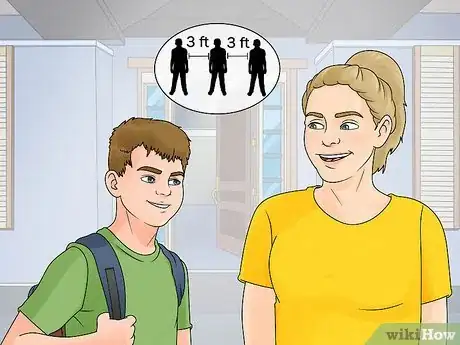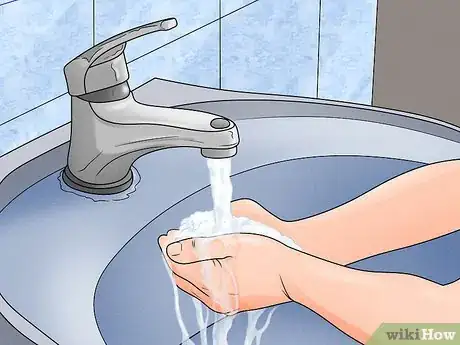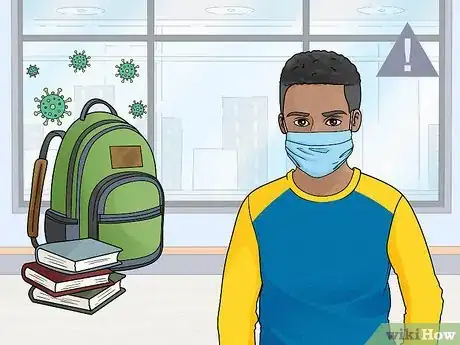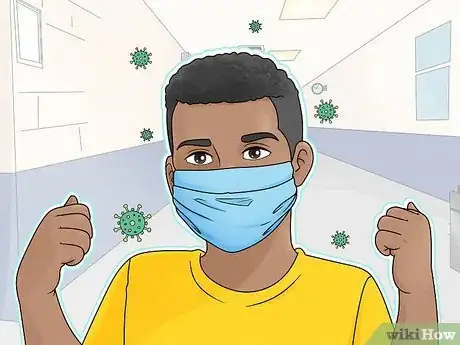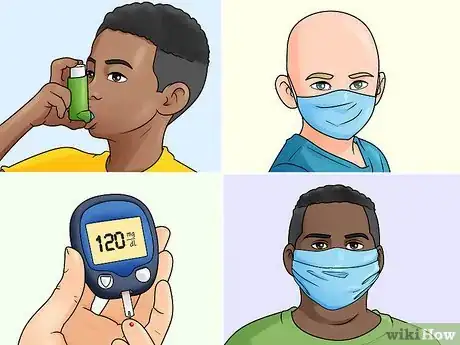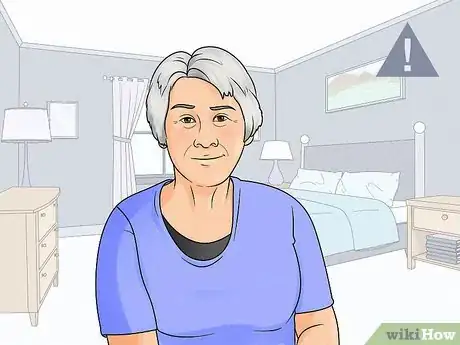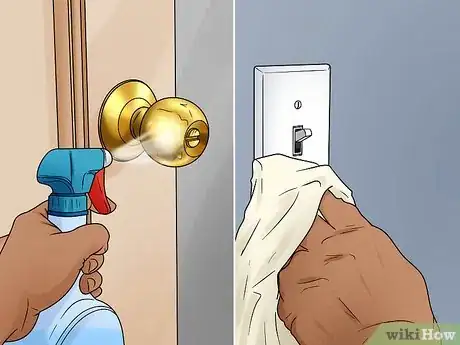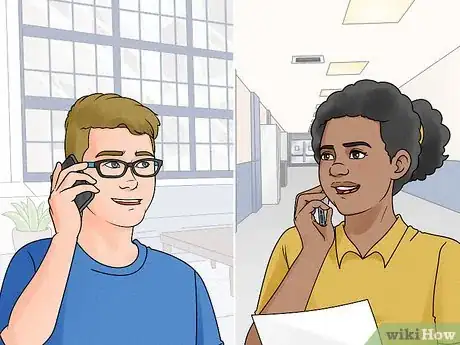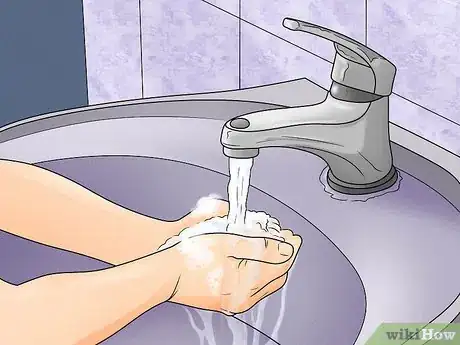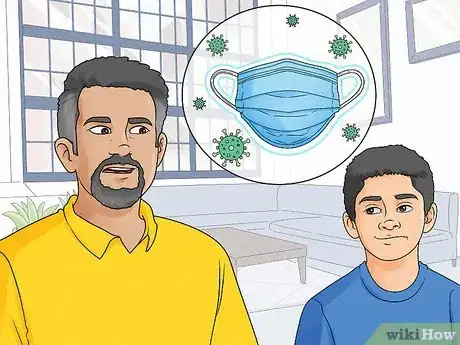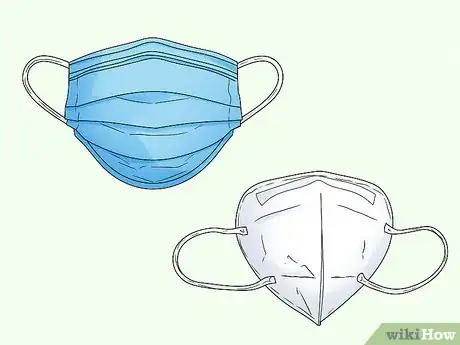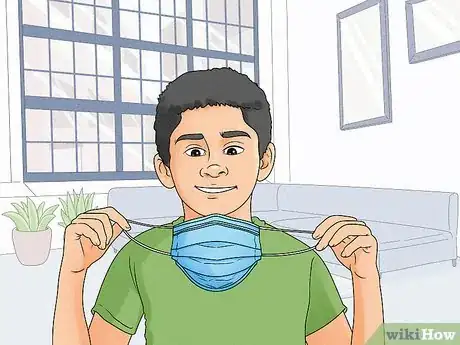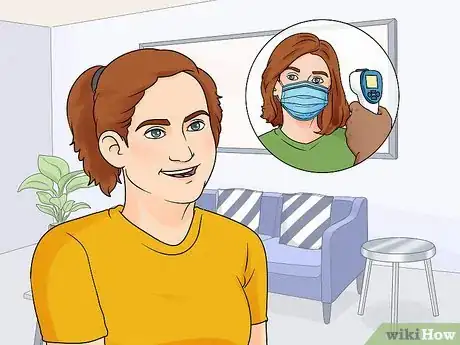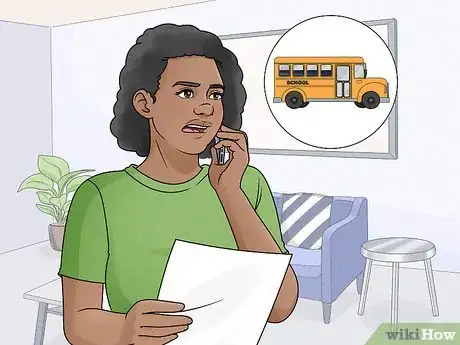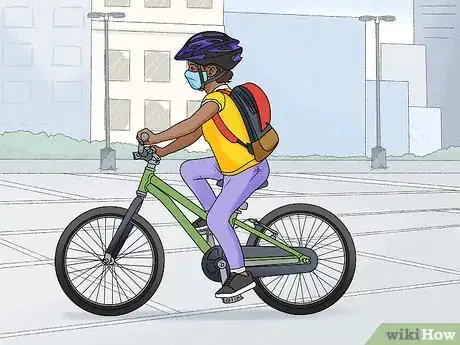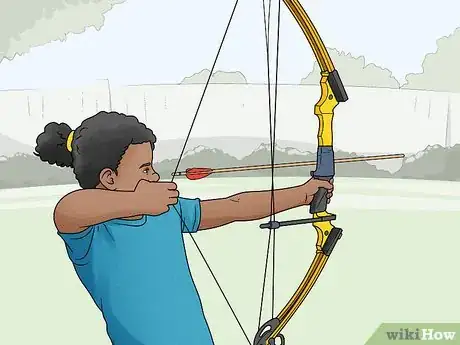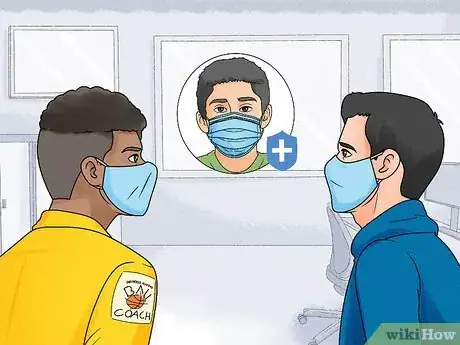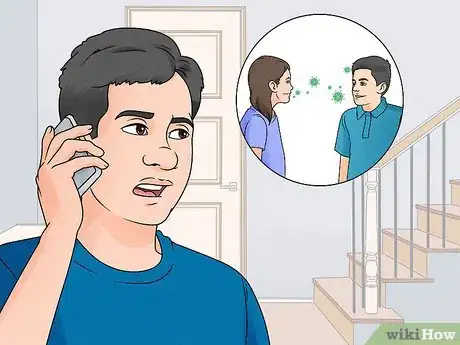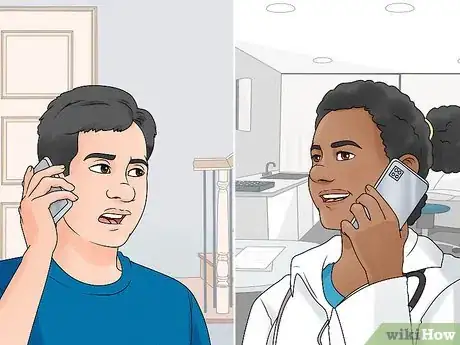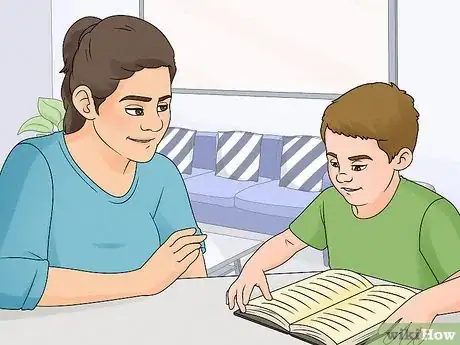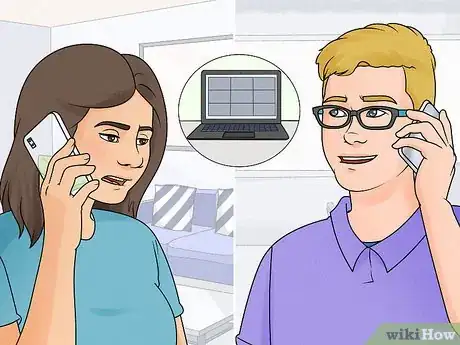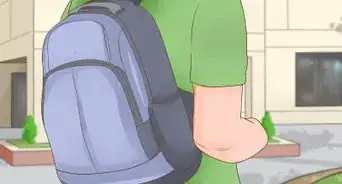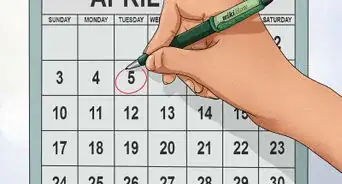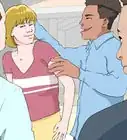This article was co-authored by Ni-Cheng Liang, MD and by wikiHow staff writer, Megaera Lorenz, PhD. Dr. Ni-Cheng Liang is a board certified Pulmonologist and the Director of Pulmonary Integrative Medicine at Coastal Pulmonary Associates affiliated with the Scripps Health Network in San Diego, California. She also serves as a Voluntary Assistant Professor of Medicine at the University of California San Diego School of Medicine while volunteering for the UCSD Medical Student-Run Free Clinic for uninsured patients. With over 15 years of experience, Dr. Liang specializes in pulmonary and respiratory medical concerns, mindfulness teaching, physician wellness, and integrative medicine. Dr. Liang received her Doctor of Medicine (MD) from the University of Maryland School of Medicine. Dr. Liang was voted as a San Diego Top Doctor in 2017 and 2019. She was also awarded the 2019 American Lung Association San Diego Lung Health Provider of the Year.
There are 29 references cited in this article, which can be found at the bottom of the page.
This article has been viewed 9,308 times.
As the fall approaches, many schools are reopening their doors after being closed for more than a year due to the COVID pandemic. While this is exciting for a lot of parents and kids, it can also feel a little scary. If you’re wondering whether it’s really safe for your child to return to school, you’re not alone. Fortunately, most schools are putting safety measures in place to keep your kids healthy and ensure that they can go back to the classroom with minimal risk. In this article, we’ll answer some of your most common questions about this complex issue.
Steps
How can I keep my child safe if they’re going to school during COVID-19?
-
1Get your child vaccinated if they are over 5. The vaccine is the most effective protection from COVID. Studies also show that it’s safe for kids. Check with local pharmacies, your child’s pediatrician, or your local health department to find out where and how to get a vaccine for your child.[1]
- In the U.S. and many other countries, the COVID vaccine is free to all residents.
- As of November 2022, only the Pfizer-BioNTech vaccine is approved for use in anyone 5 years and older.[2] Your child will need 2 doses of this vaccine, and will be considered fully vaccinated 2 weeks after getting their second dose. [3]
-
2Have children over the age of 2 wear face masks in school. This is especially important if your child is too young to get vaccinated. Choose a mask that fits well and covers your child’s nose and mouth.[4] This will not only help protect your child, but will also help prevent them from spreading COVID to others if they do get sick.[5]
- Most kids can wear a mask safely. However, if you’re worried about what wearing a mask will mean for your child, talk to their pediatrician.
Advertisement -
3Encourage your child to stay at least 3 feet (0.91 m) away from others.[6] Getting kids to socially distance can be really tough—they want to be close to their friends! However, it’s an important part of keeping them safe in school. Explain to your child that they should stay at least 3 feet (0.91 m) away from other kids in the classroom, and 6 feet (1.8 m) away from other people in general.[7]
- To keep it easy for younger kids, explain that they should try to stay a couple of arms’ lengths away from other people.
-
4Tell your child to wash their hands frequently.[8] Good hand hygiene is an important part of staying safe from any disease, including COVID. Ask your kids to wash their hands regularly with soap and water throughout the day, especially after coughing, sneezing, or going to the bathroom, and before eating or touching their face.[9]
- If your child’s school allows it, have them carry an alcohol-based hand sanitizer. They can rub their hands with the sanitizer whenever they don’t have easy access to soap and water.
What is the risk of my child becoming sick with COVID-19?
-
1There is some risk. You may have heard rumors that only adults can get COVID. Unfortunately, that isn’t true—kids can also get it. It’s possible that kids under 10 are less likely to get infected than teens and adults, but anyone can catch it.[10] This means that there’s still a chance your child could get COVID if they go back to school.
-
2Kids are much less likely to get severely ill than adults. The good news is that your child is unlikely to get dangerously sick, even if they do catch COVID. For most kids, COVID is only about as dangerous as the flu.[11] However, kids do sometimes get very sick from COVID, so it’s still important to take safety precautions.[12]
-
3Children with underlying health conditions are at higher risk. If your child has any serious health issues, talk to their doctor about whether it’s safe for them to go back to school. They may recommend that your child continue remote learning or take extra safety precautions if they have a condition such as:[13]
- Asthma
- Diabetes
- Cancer
- Other conditions that affect the immune system
- Obesity
Can children spread COVID-19 to others without showing symptoms?
-
1It’s possible that kids can infect others even if they don’t seem sick. Many kids who get COVID don’t seem that sick—they might have mild symptoms, or no symptoms at all. Scientists aren’t totally sure if kids can spread COVID without having any symptoms. But studies show that even a child who doesn’t seem sick can have high levels of the virus in their body, which means they could possibly infect others.[14]
-
2Be especially cautious if there are any high-risk people in your home. When you’re considering whether or not to send your child back to school, take other members of the family into account. Do you live with anyone who has a weakened immune system or can’t get the vaccine? If so, talk to their doctor about the possible risks of allowing your child to go back to in-person school.[15]
- People at high risk of severe illness from COVID include older adults (people over 50), people with medical conditions (such as lung, kidney, or heart disease, diabetes, cancer, or any condition that affects the immune system), and pregnant people or those who have recently given birth.[16]
What should my child’s school be doing to keep the kids safe?
-
1The school should follow proper cleaning and hygiene practices. This means making soap, clean water, and hand sanitizer available to the students, teachers, and staff. The school staff should also be regularly cleaning and disinfecting high-touch surfaces, like desks, doorknobs, and light switches.[17]
-
2They should also enforce social distancing and the use of masks.[18] Before sending your child back to school, talk to the administration about their masking and social distancing policies. The CDC recommends that students and staff should wear masks in school and that kids should be kept at least 3 feet (0.91 m) apart in the classroom.[19] The school can also take other precautions, such as:
- Having kids eat lunch at their desks or outdoors instead of in a crowded cafeteria or lunch hall.
- Keeping classrooms and other learning spaces well-ventilated whenever possible.
- Breaking classes up into smaller groups so that there’s less crowding in the classroom.
- Limiting how often kids have to move from one classroom or learning space to another.
-
3Ask the school staff how they plan to monitor COVID risks. In addition to practicing basic safety, it’s important for schools to keep a close eye on the health of their students, staff, and the larger community. That way, they can more easily take action to prevent outbreaks from spreading—and communicate with parents about any possible risks to their children. This might involve:[20]
- Doing regular health screenings or administering COVID tests to students and staff, especially if they haven’t been vaccinated.
- Keeping track of any exposures that happen in the school or community that might put students or staff at risk.
- Identifying high-risk students or staff members and giving them extra accommodations to make sure they stay safe.
- Notifying parents if their child may have been exposed to COVID.
How can I help my child feel more comfortable about wearing a mask in school?
-
1Explain why the mask is important. Your child is more likely to wear their mask if they understand the reasons behind it. Sit down and have a talk with them about it. Be honest, but keep it positive so they don’t feel scared.[23]
- For example, say something like, “The mask will help keep you, your friends, and your family safe. When everyone wears masks, the virus can’t spread from one person to another so easily.”
- You can also set a good example by wearing a mask any time you and your child are out in public—even if you’ve already been vaccinated.
- If your child is frustrated about having to wear a mask in school, let them know that you sympathize and that it’s okay to feel that way. Say something like, “I know it’s a pain, and I wish it didn’t have to be this way. But it’s really important that we all wear masks to keep each other safe.”[24]
-
2Choose a mask that fits well. Masks that fit properly are more effective, and they also tend to be more comfortable.[25] You might need to try different sizes and styles of masks before you find one that fits your child’s face. You can also try these tricks to make their mask more comfortable:[26]
- Buy mask extenders or ear savers to help take the pressure off the backs of your child’s ears. You can purchase these on websites like Amazon or Etsy.
- Buy masks that tie behind the head instead of looping behind the ears.
- Attach buttons to a headband or your child’s glasses. Attach the loops of the mask to the buttons instead of their ears.
-
3Let your child choose a mask they like. Kids like having a choice in what they wear. Take your child mask shopping or show them some fun options online. They’ll probably be happier about wearing a mask if it’s in a style or pattern they enjoy![27]
- You could even have them help you make a mask at home. Ask them to choose the fabric pattern they like best.
-
4Have them practice wearing it. It can take time for children to get used to wearing masks—especially younger kids. Before your child goes back to school, have them wear the mask from time to time. They can practice putting it on themselves, on you, or even on their stuffed animals. This will help the mask feel less scary and strange to them.[28]
- Letting your child see you and other family members wearing a mask will also help them get used to the idea of interacting with other people in masks.
How can I help my child feel less anxious about returning to school?
-
1Validate their feelings. A lot of kids will feel scared or nervous about going back to school, and that’s totally understandable. Don’t try to dismiss or minimize your child’s feelings. Instead, let them know that you recognize their feelings and that it’s okay for them to open up to you.[29]
- Acknowledge your child’s feelings, but stay calm and positive. For instance, you might say something like, “I know you’re nervous honey. But I’m going to do everything I can to keep you safe, and so will your teachers.”[30]
-
2Tell them what to expect. Kids feel more secure if they know what’s going on. Answer their questions honestly and give them as much information as you can about what it will be like when they return to school. Keep it age-appropriate so they don’t feel overwhelmed.[31]
- For example, you might explain that they’ll be wearing masks in class and that the school nurse will take their temperature at the door when they walk in.
- Sit down with your child and come up with a list of any questions they might have. If you don’t know the answers, say something like, “Those are good questions! I’m not sure, but I’ll call the school and find out.”[32]
-
3Reassure them that their school is working to keep them safe. Talk about the situation in a positive way as much as possible. Emphasize how hard the school staff and teachers are working to make sure everyone stays healthy.[33]
- If you have an older child, put it in perspective by explaining that the benefits of going back to school outweigh the risks. Say something like, “There’s no way to be 100% sure you won’t get sick. But we’ve talked to the teacher and your doctor, and they think the risks are really small. We all agree that it’s really important for you to go back to school.”
Is it safe for my child to ride the bus?
-
1Ask your school about transportation safety measures. With proper precautions, riding the bus should be safe for your child. Before the school term starts, check in with the school administration. Make sure that they are:[34]
- Maintaining a distance of at least 3 feet (0.91 m) between children on the bus (this may mean that each child will need to sit by themselves in an assigned seat).[35]
- Keeping the buses clean and sanitary between trips.
- Providing hand sanitizer on the bus.
- Keeping windows open on the bus as much as possible for better ventilation.
-
2Use alternative forms of transportation if possible. You can reduce your child’s risk of exposure to COVID by minimizing their time on the bus. Give your child a ride to school whenever you can. Or, if they have the option to walk or ride a bike to school, encourage them to do so.[36]
- Carpooling is also an option, but stick to small groups and make sure everyone wears a mask. If your child carpools, have them ride with the same people as much as possible instead of switching between different groups.[37]
Can my child safely do sports or other extracurricular activities?
-
1Outdoor, low-contact activities are relatively safe. If possible, stay away from full-contact sports or activities that require your child to be close to others in an enclosed space. Solo or one-on-one sports and activities where the players are separated—like swimming, archery, or tennis—will be a lot safer for your child than things like football or wrestling.[38]
-
2Find out what precautions your child’s coach or teacher has in place. With the right safety measures in place, many extracurricular activities can still be safe for your child. If you have any questions or concerns, don’t hesitate to reach out to the coach or teacher in charge. For instance, find out if they can:[39]
- Have extracurricular activities and sports take place outdoors as much as possible.
- Limit close contact between players (e.g., by having the kids play touch football instead of full contact).
- Sanitize equipment properly and limit equipment sharing between students.
- Require students and staff to wear masks during activities.
- Do regular health screenings or COVID tests for any activities that require close contact (like full-contact sports).
- Cut down on in-person interactions as much as possible (e.g., by holding club meetings over zoom).
What should I do if one of my child’s classmates tests positive for COVID?
-
1Ask the school if your child may have been exposed. If you hear that a student or staff member at your child’s school has COVID, try not to panic. Get as much information from the school as you can. If the person who tested positive was never in close contact with your child, you might not need to take any action.[40]
- In general, if your child spent more than 15 minutes with an infected person and they were closer than 6 feet (1.8 m) apart during that time, this would be considered a “close contact.”
-
2Call your child’s doctor for advice. If your child may have been in close contact with an infected person at school, your pediatrician might recommend that they get a COVID test. They will probably also ask you to keep your child at home for a few days to monitor for any symptoms of COVID.[41]
What are the symptoms of COVID in children?
-
1Some of the most common symptoms are fever, a cough, or a runny nose. In many children, COVID symptoms are similar to what you’d expect with a cold or the flu. Some children have no symptoms at all. Your child may also experience:[42]
- A loss of taste or smell
- A sore throat
- Fatigue
- Diarrhea, nausea, vomiting, or a stomachache
- Headaches or body aches
- Loss of appetite
-
2In rare cases, kids can get a severe reaction to COVID called MIS-C. MIS-C stands for multi-system inflammatory syndrome. MIS-C is very rare, but it can be serious. Call your child’s doctor immediately if they have symptoms such as:[43]
- A fever that lasts more than 2-3 days
- A rash
- Red or bloodshot eyes
- Neck pain
- Swollen lymph nodes
- Severe stomach issues, such as vomiting or diarrhea
- Redness or swelling of the lips and tongue
- Swollen hands or feet
- Unusual irritability or sleepiness
What happens if I choose not to send my child back to school?
-
1Your options depend on where you live. Some school districts may continue to offer online or hybrid options, while others are moving strictly to in-person instruction. Contact your local school district to find out what’s available in your area.
- If remote schooling options aren’t available where you live, you might be able to use alternative approaches, like homeschooling your child. You’ll need to research local requirements and regulations to find out if this is possible for you.
- In some countries, like the UK, you may be fined if you choose to keep your child home from school.[44]
-
2Discuss alternative options with your school district. If your child or someone else in your household is particularly vulnerable to severe illness from COVID, you may be able to work with your school district to develop a safer plan. For instance, your child’s school may be willing to offer a hybrid approach, or they may be able to develop a flexible remote learning schedule that works for your family.[45]
- Work together with your child’s school and their healthcare provider to determine the best and safest approach for your family.
Expert Q&A
-
QuestionHow should I properly wear a mask during COVID-19?
 Ni-Cheng Liang, MDDr. Ni-Cheng Liang is a board certified Pulmonologist and the Director of Pulmonary Integrative Medicine at Coastal Pulmonary Associates affiliated with the Scripps Health Network in San Diego, California. She also serves as a Voluntary Assistant Professor of Medicine at the University of California San Diego School of Medicine while volunteering for the UCSD Medical Student-Run Free Clinic for uninsured patients. With over 15 years of experience, Dr. Liang specializes in pulmonary and respiratory medical concerns, mindfulness teaching, physician wellness, and integrative medicine. Dr. Liang received her Doctor of Medicine (MD) from the University of Maryland School of Medicine. Dr. Liang was voted as a San Diego Top Doctor in 2017 and 2019. She was also awarded the 2019 American Lung Association San Diego Lung Health Provider of the Year.
Ni-Cheng Liang, MDDr. Ni-Cheng Liang is a board certified Pulmonologist and the Director of Pulmonary Integrative Medicine at Coastal Pulmonary Associates affiliated with the Scripps Health Network in San Diego, California. She also serves as a Voluntary Assistant Professor of Medicine at the University of California San Diego School of Medicine while volunteering for the UCSD Medical Student-Run Free Clinic for uninsured patients. With over 15 years of experience, Dr. Liang specializes in pulmonary and respiratory medical concerns, mindfulness teaching, physician wellness, and integrative medicine. Dr. Liang received her Doctor of Medicine (MD) from the University of Maryland School of Medicine. Dr. Liang was voted as a San Diego Top Doctor in 2017 and 2019. She was also awarded the 2019 American Lung Association San Diego Lung Health Provider of the Year.
Board Certified Pulmonologist You're going to wash your hands before you put on the mask. You're then going to open the mask so that you're holding the mask on its outside, you want to keep the inside part of the mask that's going to touch your face as clean as possible. Use one of the ear loops over the right ear, and then mindfully and with intention, you can trace or help the fabric of the mask along the front of your face, putting the other ear loop on. If your mask has a nose bridge adjuster, a piece of metal, or a piece of flexible material at the bridge of the nose, you're going to make sure that you take your hands and depress the bendable piece of metal to help ensure a tighter, closer, personalized fit. You'll also want to make sure that the fabric stretches beyond the bottom part of your chin.
You're going to wash your hands before you put on the mask. You're then going to open the mask so that you're holding the mask on its outside, you want to keep the inside part of the mask that's going to touch your face as clean as possible. Use one of the ear loops over the right ear, and then mindfully and with intention, you can trace or help the fabric of the mask along the front of your face, putting the other ear loop on. If your mask has a nose bridge adjuster, a piece of metal, or a piece of flexible material at the bridge of the nose, you're going to make sure that you take your hands and depress the bendable piece of metal to help ensure a tighter, closer, personalized fit. You'll also want to make sure that the fabric stretches beyond the bottom part of your chin.
References
- ↑ https://www.cdc.gov/coronavirus/2019-ncov/vaccines/recommendations/adolescents.html
- ↑ https://www.cdc.gov/coronavirus/2019-ncov/vaccines/different-vaccines.html
- ↑ https://www.usatoday.com/story/news/politics/2021/07/22/covid-vaccine-kids-coming-soon-biden/8052527002/
- ↑ Ni-Cheng Liang, MD. Board Certified Pulmonologist. Expert Interview. 23 October 2020.
- ↑ https://www.healthychildren.org/English/health-issues/conditions/COVID-19/Pages/Return-to-School-During-COVID-19.aspx
- ↑ Ni-Cheng Liang, MD. Board Certified Pulmonologist. Expert Interview. 23 October 2020.
- ↑ https://www.healthychildren.org/English/health-issues/conditions/COVID-19/Pages/Return-to-School-During-COVID-19.aspx
- ↑ Ni-Cheng Liang, MD. Board Certified Pulmonologist. Expert Interview. 23 October 2020.
- ↑ https://www.cdc.gov/coronavirus/2019-ncov/prevent-getting-sick/prevention.html
- ↑ https://www.mayoclinic.org/diseases-conditions/coronavirus/in-depth/coronavirus-in-babies-and-children/art-20484405
- ↑ https://www.npr.org/sections/health-shots/2021/05/25/997467734/childrens-risk-of-serious-illness-from-covid-19-is-as-low-as-it-is-for-the-flu
- ↑ https://www.health.harvard.edu/diseases-and-conditions/coronavirus-outbreak-and-kids
- ↑ https://www.who.int/news-room/q-a-detail/coronavirus-disease-covid-19-schools
- ↑ https://www.health.harvard.edu/diseases-and-conditions/coronavirus-outbreak-and-kids
- ↑ https://www.cdc.gov/coronavirus/2019-ncov/community/schools-childcare/decision-tool.html
- ↑ https://www.cdc.gov/coronavirus/2019-ncov/need-extra-precautions/index.html
- ↑ https://www.who.int/news-room/q-a-detail/coronavirus-disease-covid-19-schools
- ↑ Ni-Cheng Liang, MD. Board Certified Pulmonologist. Expert Interview. 23 October 2020.
- ↑ https://www.healthychildren.org/English/health-issues/conditions/COVID-19/Pages/Return-to-School-During-COVID-19.aspx
- ↑ https://www.healthychildren.org/English/health-issues/conditions/COVID-19/Pages/Return-to-School-During-COVID-19.aspx
- ↑ https://www.uchicagomedicine.org/forefront/coronavirus-disease-covid-19/covid-19-tips-for-keeping-kids-safe-during-the-summer
- ↑ https://www.canr.msu.edu/news/handwashing_for_preschoolers
- ↑ https://www.urmc.rochester.edu/strong-center-developmental-disabilities/resources/masks-toolkit.aspx
- ↑ https://www.connecticutchildrens.org/coronavirus/mask-up-tips-to-make-kids-more-comfortable-with-masks-broken-down-by-age/
- ↑ https://www.allinahealth.org/healthysetgo/thrive/tips-to-make-face-masks-more-comfortable
- ↑ https://www.urmc.rochester.edu/strong-center-developmental-disabilities/resources/masks-toolkit.aspx
- ↑ https://www.urmc.rochester.edu/strong-center-developmental-disabilities/resources/masks-toolkit.aspx
- ↑ https://www.childrensmn.org/2020/06/05/make-face-masks-comfortable-kids/
- ↑ https://www.cedars-sinai.org/blog/school-anxiety.html
- ↑ https://childmind.org/article/back-to-school-anxiety-during-covid/
- ↑ https://my.clevelandclinic.org/podcasts/health-essentials/managing-school-anxiety-during-covid-19-with-dr-ethan-benore
- ↑ https://childmind.org/article/back-to-school-anxiety-during-covid/
- ↑ https://childmind.org/article/back-to-school-anxiety-during-covid/
- ↑ https://www.who.int/news-room/q-a-detail/coronavirus-disease-covid-19-schools
- ↑ https://www.healthychildren.org/English/health-issues/conditions/COVID-19/Pages/Return-to-School-During-COVID-19.aspx
- ↑ https://www.healthychildren.org/English/health-issues/conditions/COVID-19/Pages/Return-to-School-During-COVID-19.aspx
- ↑ https://answers.childrenshospital.org/carpooling-covid-19/
- ↑ https://www.arthritis.org/health-wellness/about-arthritis/related-conditions/other-diseases/childhood-sports-and-coronavirus
- ↑ https://www.cdc.gov/coronavirus/2019-ncov/community/schools-childcare/operation-strategy.html
- ↑ https://scdhec.gov/sites/default/files/media/document/School-COVID-19-FAQ_FINAL_8.24.2020.pdf
- ↑ https://www.cdc.gov/coronavirus/2019-ncov/community/schools-childcare/student-becomes-sick-diagnosis-flowchart.html
- ↑ https://www.cdc.gov/coronavirus/2019-ncov/daily-life-coping/children/symptoms.html
- ↑ https://www.health.harvard.edu/diseases-and-conditions/coronavirus-outbreak-and-kids
- ↑ https://www.theguardian.com/education/2020/oct/09/parents-in-england-refusing-to-send-their-children-back-to-school
- ↑ https://services.aap.org/en/pages/2019-novel-coronavirus-covid-19-infections/clinical-guidance/caring-for-children-and-youth-with-special-health-care-needs-during-the-covid-19-pandemic/



